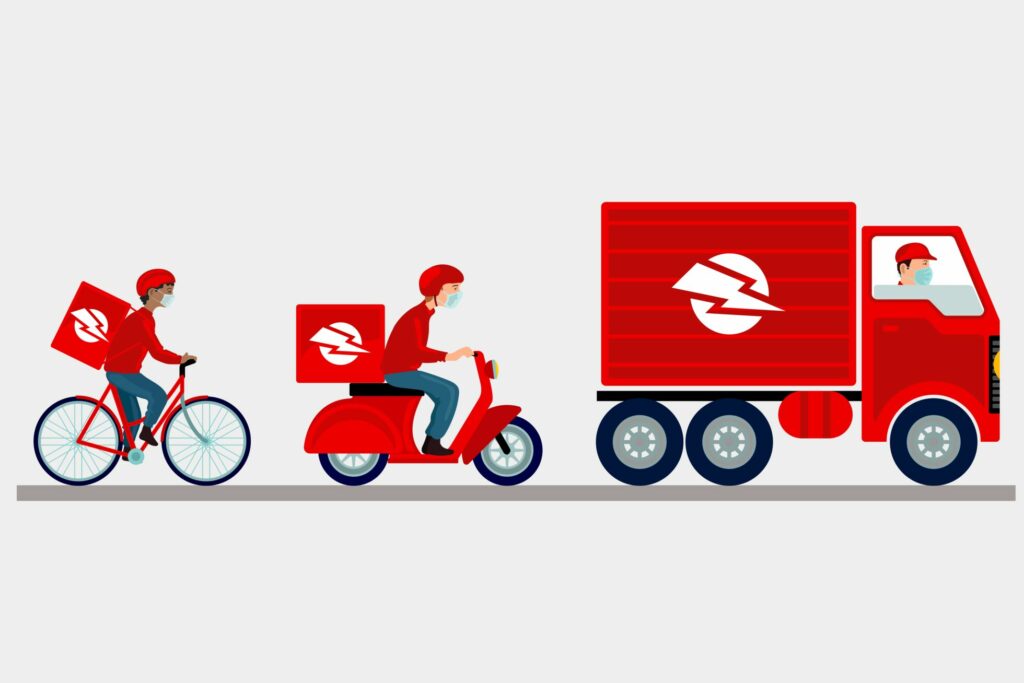With the introduction of cargo bikes, light electric vehicles, vans, and so on, dealing with a variety of complementary means of transport has become a common logistical problem. How do you determine the most appropriate routes when the characteristics and operational costs of vehicles can be so radically different?
Our route optimization API now closely models all these various costs. As always, we rely on the most recent version of VROOM, the open-source software that we have developed.

Mixed Fleets
Our multi-profile optimization capabilities have long been able to factor in the way route times vary depending on vehicle type, but that is just one part of overall costs. Every vehicle has a specific per-hour cost, and their fixed costs can vary widely, too, for example if these are rental vehicles, or those of sub-contractors, etc.
Our API now takes into account not only fixed costs, but hourly vehicle costs as well. The goal is no longer simply to optimize overall travel time, but rather to determine the real operational cost of routes. As a result, in addition to assigning tasks and sequencing them, we can now optimize the vehicular resources to be drawn upon in terms of overall cost.
Vehicle Range
In the field, vehicle range is an essential consideration, regardless of whether limiting factors are material in nature, such as battery-life, or a matter of operational choices. For example, it is important to be able to manage the physical effort required by routes that are serviced by bicycle.
Simply putting limits on work time is much too rigid an approach and the solutions it provides are significantly less than optimal. That is why, along with time windows, we have developed a way of limiting the travel times of individual vehicles. Our algorithms will not allow a vehicle to go beyond its maximum range, yet our models still offer maximum flexibility and thus still provide the best solutions.
Computing Times
Implementing these new features necessarily increases computing times. Because we remain dedicated to providing solutions as quickly as possible, we have tailored our algorithms to minimize that added time. Actually, the recent improvements that we have made in accelerating problem solving already compensate for the additional time these new features demand.
Contact us if you would like to optimize the way you manage your fleet!
